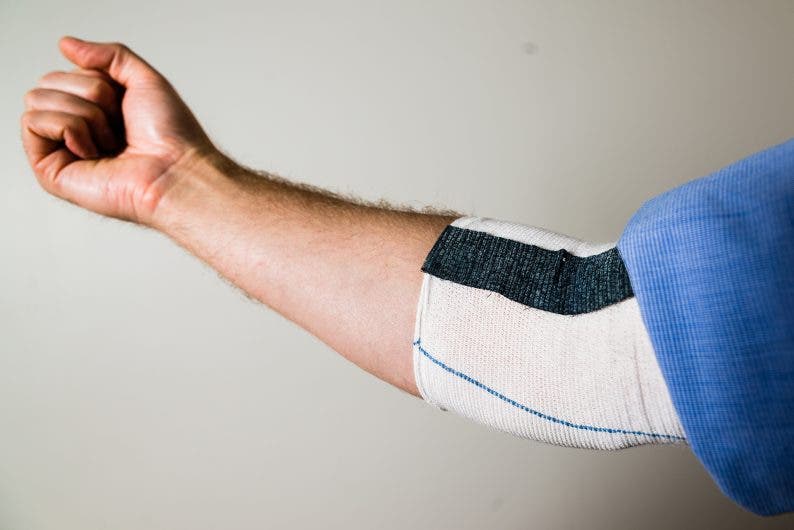
These muscle-like textiles made from cellulose yarn can respond to low-voltage electricity to contract just like actual muscle fibers. Clothing made from such a material could help those with disabilities enhance their mobility by providing a far more light-weight alternative to cumbersome exoskeletons. It could also help otherwise healthy people who have physically intensive jobs lessen their load.
“Like a muscle, the actuation is triggered by an electrical potential, driven by a chemical reaction, and operated in an electrolyte,” says study author Edwin Jager, an applied physicist at Linköping University, Sweden.
The fabric was first knitted and woven so it matched the structure of real muscle. It was then bathed in an electroactive solution to make it responsive to electricity. This rather simple recipe allows the fabric to exhibit properties similar to biological muscle, as reported in Science Advances.
The knitted textile offers flexibility while the woven version can exert more force since, like real muscle, woven fibers are coupled in parallel.
“In this case, the extension of the fabric is the same as that of the individual threads. But what happens is that the force developed is much higher when the threads are connected in parallel in the weave,” said Nils-Krister Persson of the Swedish School of Textiles at the University of Borås for ResearchGate.
The strong and flexible textile could be sewn into parts of clothing, like the sleeve tights, to made movement easier, i.e. use less energy. Right now, some people with motor disabilities use exoskeletons powered by motors or pressurized air to move about but these can cost $50,000 onward.
“Enormous and impressive advances have been made in the development of exoskeletons, which now enable people with disabilities to walk again. But the existing technology looks like rigid robotic suits. It is our dream to create exoskeletons that are similar to items of clothing, such as “running tights” that you can wear under your normal clothes. Such device could make it easier for older persons and those with impaired mobility to walk,” Jager said in a statement for the press.
That’s not to say that the muscle-like fiber made by the Swedish researchers can come close to exoskeleton practicality. The fiber was used to move a LEGO lever and lift a two-gram weight when an electrical current was passed through it but you’d need to do far more than that for it to be functional. There are also a couple of other limitations that right now make the fiber rather impractical, like the fact that it requires an electrolyte to actuate the artificial muscles. The researchers hope to make it work using only air instead.
Even so, this is some exciting research and might one day develop into a much more promising technology.
“I hope that this work will inspire others to look into the possibilities of textile technology,” says Jager. “My collaborators have taught me that textiles, ubiquitous as they are, can truly be high-tech technology.”






